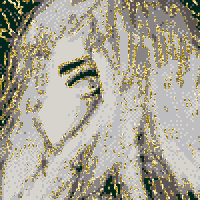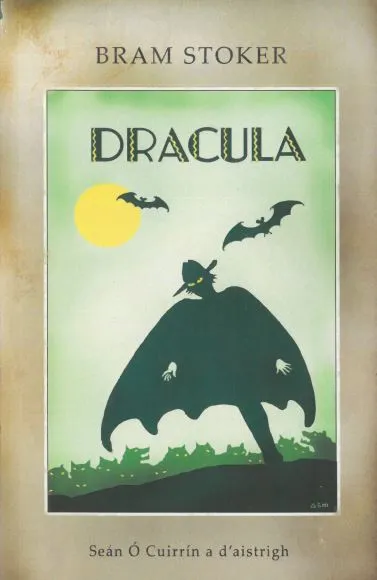
Dracula an Lae
I’ve made some tweaks and corrections to this post, including fixing some confusion I had about Arthur Holmwood’s name.
I first read Dracula in 2022, following along with Dracula Daily, a newsletter that sends out sections of the book on the date in which they occur1. One of my posts about it on Tumblr actually ended up in the print version. The following year I read it again, this time following along with two other versions of the book: Powers of Darkness and Dracula in Istanbul, English retranslations of Icelandic and Turkish translations of the original novel respectively. It was interesting to compare the changes made in each version. I made a graphic showing how both version abridge the story compared to the original. That year I also read the comic book adaptation of Francis Ford Coppola’s Bram Stoker’s Dracula.
Last year I did not read Dracula again but this year I had a notion: To pick up an Irish translation and follow through the book simultaneously with my print copy of Dracula Daily2. This has immediately got off to a bad start: I was busy yesterday and so didn’t even start on the
Still, there are some interesting things here even at a glance. I am always curious about how proper nouns are handled in translation. Here there is a mixture of Gaelicisation and leaving things as is. Jonathan Harker is Seon Ó hEarcair3 but Dracula remains Dracula (with his title of count translated as cunta). Most placenames use their standard Irish names—Transylvania is Transalváin—but Munich is actually reverted to its native München.
Flicking ahead I can see that Mina Murray is Mín Ní Mhuirí4 and John Seward is Seán Suaird5 but other names are left unchanged or only partially translated. Lucy Westenra is now Laoise6 Westenra and Arthur Holmwood is Artúr7 Holmwood. Abraham Van Helsing and Mr. Quincy P. Morris are unchanged, with the English honorific still being used sometimes in the text. Other minor characters like Renfield seem to keep their English names. I can’t really tell what the basis was here for deciding which names to translate or not.
Returning to section for the
Bram Stoker himself was an Anglo-Irishman from Dublin and a lot of people say that the choice of the name Dracula for the eponymous vampire was not only inspired by the historical Vlad the Impaler but also because it sounds vaguely like “droch-fhola”, a phrase that could be read as “evil blood” in Irish. It’s not true at all, but people say it!
One last thing to note about this translation is that the cover is quite funny.

-
Dracula is an epistolary novel; it is made up of fictional letters and diary entries written by the characters. ↩
-
The title of this post, Dracula an Lae, is Dracula Daily in Irish. ↩
-
Pronounced something approximately like ”Shown O’Harker”. Irish does not natively use the letter J and Gaelicisations tend to use a slender s sound in it place, which is similar to an English “sh” sound. ↩
-
Something like “Meen Nee Woor-ee”. Murray is an Anglicised Gaelic surname in the first place. The male form is Ó Muirí, something like “O Moor-ee”. She of course later in the novel becomes Mín Uí Earcair, “Meen E Arker”. ↩
-
”Shawn Seward”. ↩
-
“Lee-sha”. ↩
-
“Ar-toor”. Once his father dies Artúr inherits the title of Tiarna Godalming. ↩
-
Perhaps the translator, in 1933, did not wish to have to research (or invent) Irish or native names for Wallachs, Dacians, Magyars, Szekelys and Huns. ↩